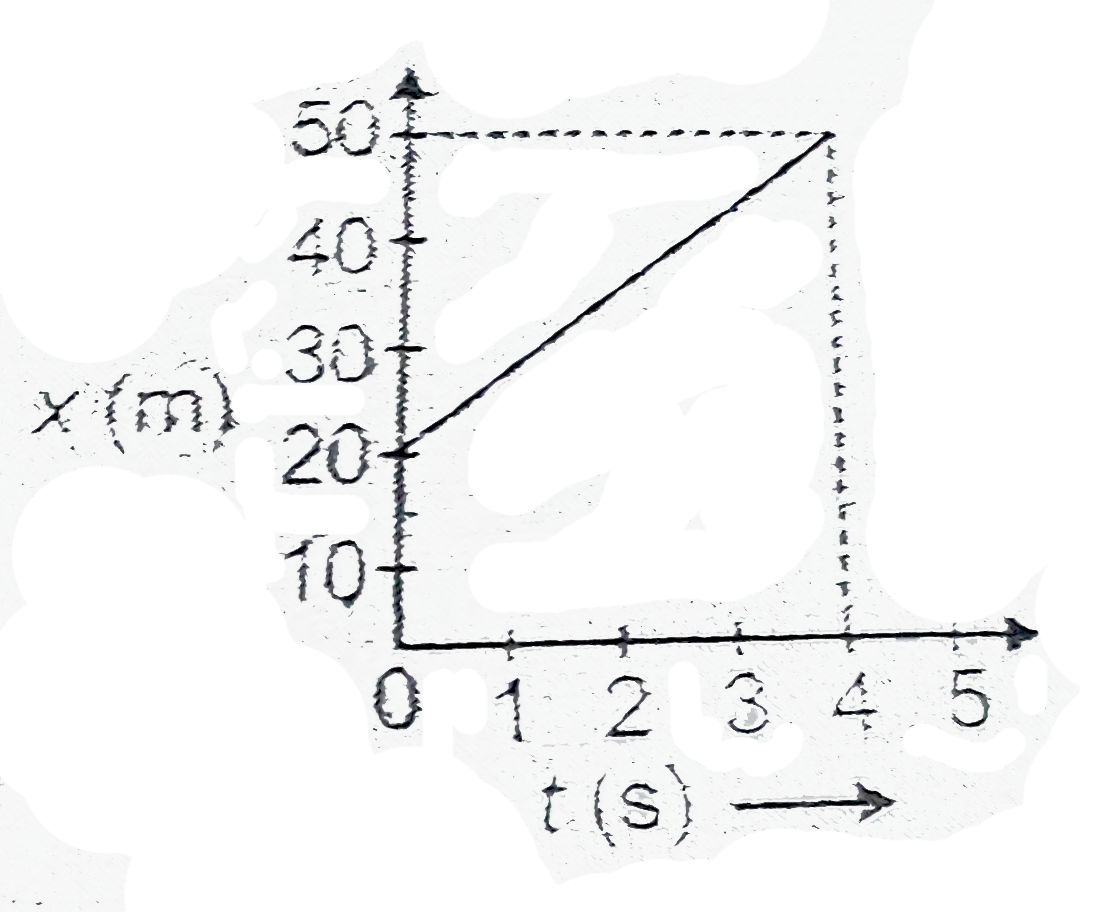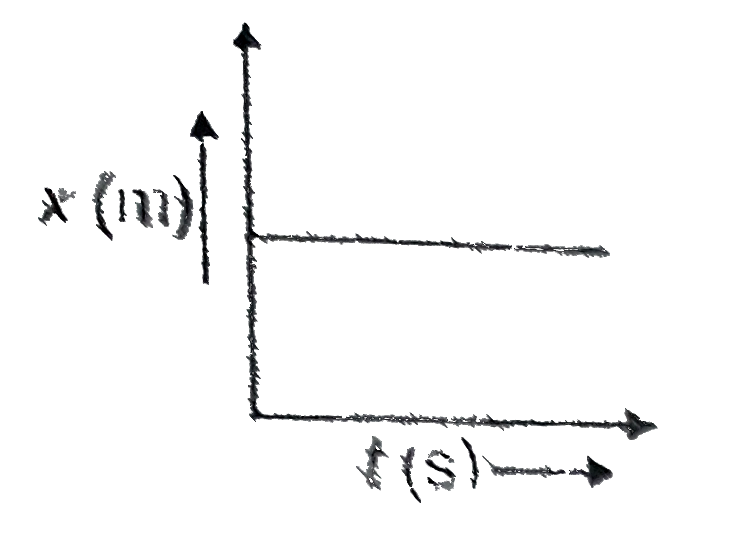Assertion : The position-time graph of a body moving uniformly is a straight line parallel to position-axis.
Reason : The slope of position-time graph in a uniform motion gives the velocity of an object.
If both assertion and reason are trure and reason is the correct explanation of assertion.
If both assertion and reason are true but reason is not the correct explanations of assertion.
If assertion is true but reason is false.
If both assertion and reason is false
The correct Answer is:(d)
To solve the question regarding the assertion and reason about the position-time graph of a body moving uniformly, we will analyze both statements step by step.
1. Understanding the Assertion:
- The assertion states: "The position-time graph of a body moving uniformly is a straight line parallel to the position-axis."
- In uniform motion, the position of the body changes at a constant rate. This means that the graph should show a linear relationship between position and time.
- A straight line parallel to the position-axis indicates that the position remains constant over time, which is not the case for uniform motion. Therefore, this assertion is false.
2. Understanding the Reason:
- The reason states: "The slope of the position-time graph in a uniform motion gives the velocity of an object."
- The slope of a position-time graph (dx/dt) represents the velocity of the object. In uniform motion, the velocity is constant, and thus the slope will also be constant.
- This statement is true because the slope indeed gives the velocity of the object in uniform motion.
3. Conclusion:
- Since the assertion is false and the reason is true, we can conclude that the correct option is:
- C: Assertion is false but reason is true.
- The assertion states: "The position-time graph of a body moving uniformly is a straight line parallel to the position-axis."
- In uniform motion, the position of the body changes at a constant rate. This means that the graph should show a linear relationship between position and time.
- A straight line parallel to the position-axis indicates that the position remains constant over time, which is not the case for uniform motion. Therefore, this assertion is false.
- The reason states: "The slope of the position-time graph in a uniform motion gives the velocity of an object."
- The slope of a position-time graph (dx/dt) represents the velocity of the object. In uniform motion, the velocity is constant, and thus the slope will also be constant.
- This statement is true because the slope indeed gives the velocity of the object in uniform motion.
- Since the assertion is false and the reason is true, we can conclude that the correct option is:
- C: Assertion is false but reason is true.
Topper's Solved these Questions
- MOTION IN A STRAIGHT LINEBOOK - NCERT FINGERTPS ENGLISHCHAPTER - MOTION IN A STRAIGHT LINEEXERCISE - Higher Order Thinking Skills
10 Videos
- MOTION IN A STRAIGHT LINEBOOK - NCERT FINGERTPS ENGLISHCHAPTER - MOTION IN A STRAIGHT LINEEXERCISE - NCERT Exemplar
6 Videos
- MOTION IN A STRAIGHT LINEBOOK - NCERT FINGERTPS ENGLISHCHAPTER - MOTION IN A STRAIGHT LINEEXERCISE - NCERT EXEMPLAR PROBLEMS
6 Videos
- MOTION IN A PLANE BOOK - NCERT FINGERTPS ENGLISHCHAPTER - MOTION IN A PLANE EXERCISE - Assertion And Reason
15 Videos
- OSCILLATIONS BOOK - NCERT FINGERTPS ENGLISHCHAPTER - OSCILLATIONS EXERCISE - Assertion And Reason
15 Videos
Similar Questions
Knowledge Check
The velocity-time graph of a body in motion is a straight line inclined to the time axis. The correct statement is :
Avelocity is uniformBacceleration is uniformCboth velocity and acceleration are uniformDneither velocity nor acceleration is uniform.
The position-time graph of an object is given below. What is the velocity of the object?

View SolutionThe position-time graph of an object is given below. What is the velocity of the object?

View SolutionThe position - time (x−t) graph of an object in uniform motion is shown below, the velocity of object is

View SolutionThe position-time graph of a moving particle is a straight line inclined with time axis and passing through origin, therefore
View Solution(A):The position -time graph of a body may be a straight line parallel to time axis
(R ):It is possible that position of a body does not change with time.
View SolutionDraw the position-time graph of a stationary object.
View SolutionDraw the position-time graph of an object moving with positive accceleration.
View Solution
